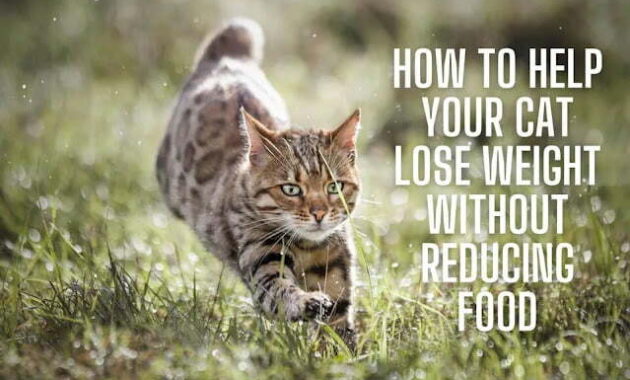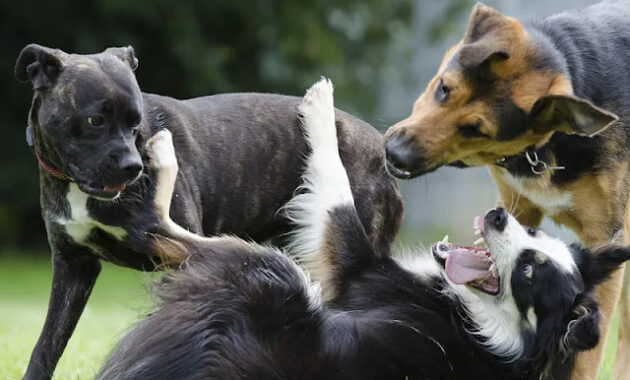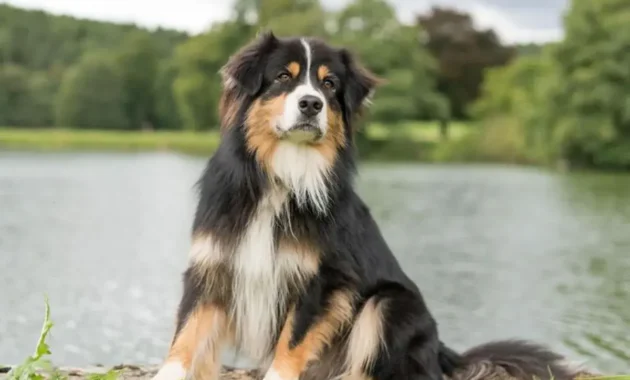As a pet owner, it’s important to monitor your cat’s weight to ensure they’re maintaining a healthy size. However, sometimes cats can experience weight gain despite a balanced diet and active lifestyle. It’s crucial to understand the potential causes of weight gain in cats to prevent any associated health risks.
One of the primary causes of weight gain in cats is overeating. When cats consume more calories than they need, the excess energy is stored as fat. Other factors that may contribute to weight gain in cats include a sedentary lifestyle, age, and underlying health conditions such as hypothyroidism.
Additionally, certain medications and hormonal imbalances can also lead to weight gain in cats. It’s essential to consult with your veterinarian if your cat experiences rapid weight gain, as they can identify the underlying cause and recommend an appropriate treatment plan.
Obesity can pose significant health risks for cats, including an increased risk of diabetes, heart disease, and joint problems. Overweight cats may also experience breathing difficulties and decreased mobility, leading to a lower quality of life. Read also: Health Risks of Overweight Cats.
The Importance of Portion Control
As a pet owner, it’s crucial to understand the importance of portion control for your cat’s overall health and well-being. Overfeeding your cat can lead to various health problems, including obesity, diabetes, and heart disease. However, determining the appropriate portion size and controlling portions without reducing food intake can be challenging.
Overfeeding your cat can have severe consequences on their health. It’s easy to fall into the trap of overfeeding, especially when cats beg for food or appear hungry. However, feeding your cat more than they need can lead to weight gain and increase their risk of developing various health problems.
How to Determine Your Cat’s Ideal Portion Size
Determining your cat’s ideal portion size can be challenging, as it depends on several factors such as age, weight, activity level, and overall health. It’s best to consult with your veterinarian to determine your cat’s ideal portion size and feeding schedule based on their unique needs.
Your veterinarian can also recommend the appropriate type of food for your cat, whether it’s dry, wet, or a combination of both. Additionally, measuring your cat’s food with a kitchen scale or measuring cup can help ensure that you’re feeding them the correct portion size.
Tips for Controlling Portions Without Reducing Food Intake
Controlling portions without reducing food intake can be challenging, especially if your cat appears hungry or begs for food. However, there are several tips that you can follow to control portions effectively.
Firstly, consider feeding your cat smaller meals throughout the day instead of one or two large meals. This can help prevent overeating and keep your cat feeling full throughout the day.
Another effective way to control portions is by using puzzle feeders or slow feeders. These types of feeders force your cat to eat more slowly, helping them feel full on less food.
Incorporating Exercise into Your Cat’s Routine
Exercise is crucial for maintaining your cat’s overall health and well-being. Regular exercise can help keep your cat’s weight under control, improve their cardiovascular health, and prevent boredom and destructive behavior.
However, many pet owners struggle to incorporate exercise into their cat’s daily routine. In this article, we’ll explore the benefits of exercise for cats, creative ways to encourage your cat to exercise, and how much exercise your cat needs.
The Benefits of Exercise for Cats
Exercise offers numerous benefits for cats, both physical and mental. Regular exercise can help prevent obesity and its associated health problems, including diabetes, heart disease, and joint problems. Exercise can also help improve your cat’s cardiovascular health, strengthen their muscles, and improve their agility and balance.
In addition to the physical benefits, exercise can also help prevent boredom and destructive behavior in cats. Regular playtime can help stimulate your cat’s mind, improve their mood, and strengthen the bond between you and your feline friend.
Creative Ways to Encourage Your Cat to Exercise
Encouraging your cat to exercise can be challenging, especially if your cat is older or less active. However, there are many creative ways to incorporate exercise into your cat’s routine. Some ideas include:
- Using interactive toys and puzzles to encourage your cat to play and move
- Creating an indoor obstacle course with tunnels, boxes, and scratching posts
- Encouraging your cat to chase laser pointers or string toys
- Taking your cat for a walk on a leash or in a stroller
- Incorporating playtime into your cat’s feeding routine by using a puzzle feeder or food-dispensing toy
How Much Exercise Does Your Cat Need?
The amount of exercise your cat needs depends on several factors, including their age, weight, and overall health. As a general guideline, cats should get at least 20-30 minutes of moderate-intensity exercise each day.
However, it’s essential to consult with your veterinarian to determine the appropriate amount and type of exercise for your cat based on their unique needs.
Choosing the Right Cat Food
The food you feed your cat plays a significant role in their overall health and well-being. A high-quality diet can help prevent health problems and ensure your cat gets the nutrients they need to thrive.
How to Choose a High-Quality Cat Food
When choosing a cat food, it’s essential to look for a high-quality brand that meets your cat’s nutritional needs. Look for a food that lists a high-quality protein source as the first ingredient, such as chicken, turkey, or fish. Avoid foods that list by-products, fillers, or artificial preservatives as the primary ingredients.
It’s also essential to choose a food that is appropriate for your cat’s life stage and health needs. Kittens, adult cats, and senior cats all have different nutritional needs, and there are foods designed specifically for each stage of life. If your cat has a specific health condition, such as kidney disease or food allergies, your veterinarian can recommend a specialized diet to meet their unique needs.
Understanding Cat Food Labels
Understanding cat food labels can be challenging, as they can be misleading and confusing. Look for foods that meet the Association of American Feed Control Officials (AAFCO) standards, which ensure the food meets basic nutritional requirements.
The label should also provide information about the guaranteed analysis, which lists the minimum amounts of protein, fat, fiber, and moisture in the food.
The Role of Diet in Cat Weight Loss
Diet plays a significant role in cat weight loss, and choosing the right food can help your cat reach and maintain a healthy weight. Look for a food that is high in protein and low in fat and carbohydrates. Feeding your cat smaller, more frequent meals throughout the day can also help prevent overeating and promote weight loss.
It’s important to consult with your veterinarian before starting your cat on a weight loss diet, as rapid weight loss can be dangerous for cats. Your veterinarian can recommend a safe and effective weight loss plan and monitor your cat’s progress to ensure they are losing weight at a healthy rate.
Other Strategies for Cat Weight Loss
If your cat is overweight or obese, there are several other strategies you can try to help them achieve a healthy weight. In this article, we’ll explore intermittent fasting for cats, weight loss supplements for cats, and seeking veterinary advice for cat weight loss.
1. Intermittent Fasting for Cats
Intermittent fasting is a popular weight loss strategy for humans, and it can also be effective for cats. The idea is to limit your cat’s food intake to specific hours of the day or specific days of the week. For example, you could feed your cat two small meals a day, spaced out by eight hours, or fast them for 24 hours once a week.
Intermittent fasting can help promote weight loss by reducing the number of calories your cat consumes and improving insulin sensitivity. However, it’s essential to consult with your veterinarian before trying intermittent fasting, as it may not be appropriate for all cats.
2. Weight Loss Supplements for Cats
Weight loss supplements can also be an effective tool for helping your cat achieve a healthy weight. Some supplements work by suppressing your cat’s appetite, while others help boost their metabolism or increase their energy levels.
However, it’s important to choose a high-quality supplement that is safe for cats and to consult with your veterinarian before starting your cat on any new supplement.
3. Seeking Veterinary Advice for Cat Weight Loss
If your cat is overweight or obese, it’s essential to seek veterinary advice for cat weight loss. Your veterinarian can help you develop a safe and effective weight loss plan that takes into account your cat’s unique health needs and lifestyle. They can also monitor your cat’s progress and make adjustments to their diet and exercise plan as needed.
In some cases, underlying medical conditions may be contributing to your cat’s weight gain, and your veterinarian can help diagnose and treat these conditions. They can also provide guidance on how to safely and effectively manage your cat’s weight to help them achieve a healthy weight and prevent future health problems.
Conclusion
Helping your cat achieve a healthy weight is an essential part of ensuring their overall health and well-being. By following the tips and strategies outlined in this article, you can help your cat lose weight without reducing food intake and improve their overall health.
To recap, some of the tips for helping your cat lose weight include incorporating exercise into their routine, practicing portion control, choosing the right cat food, and exploring other weight loss strategies like intermittent fasting and weight loss supplements. It’s also important to seek veterinary advice if your cat is overweight or obese, as your veterinarian can help you develop a safe and effective weight loss plan for your cat.
At the end of the day, it’s crucial to prioritize your cat’s health and wellness above all else. By taking steps to help your cat achieve a healthy weight, you can help them live a longer, happier, and healthier life. With a little bit of effort and some patience, you can help your cat achieve their ideal weight and enjoy all the benefits of a healthy and active lifestyle.


